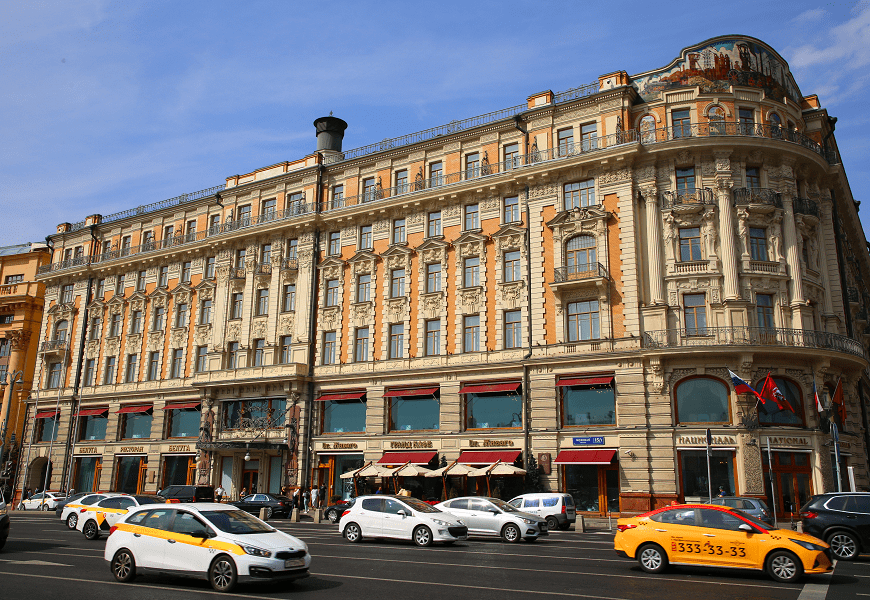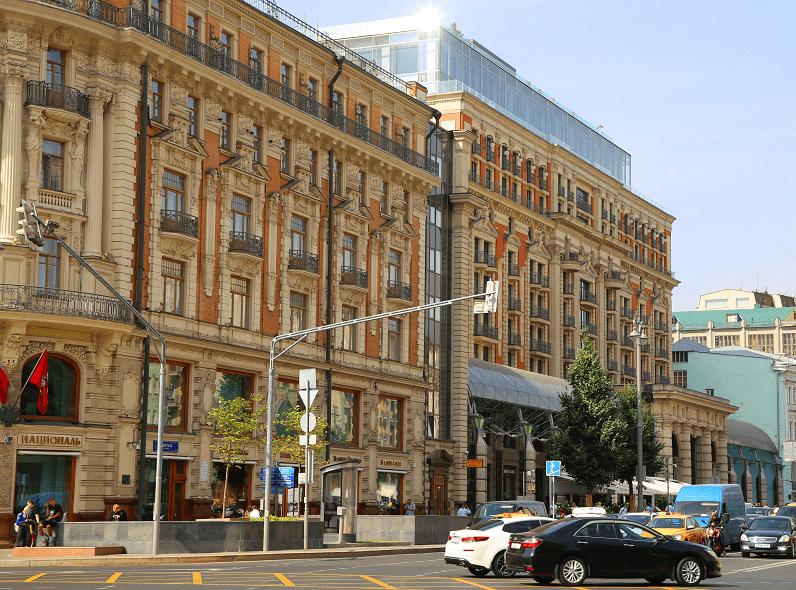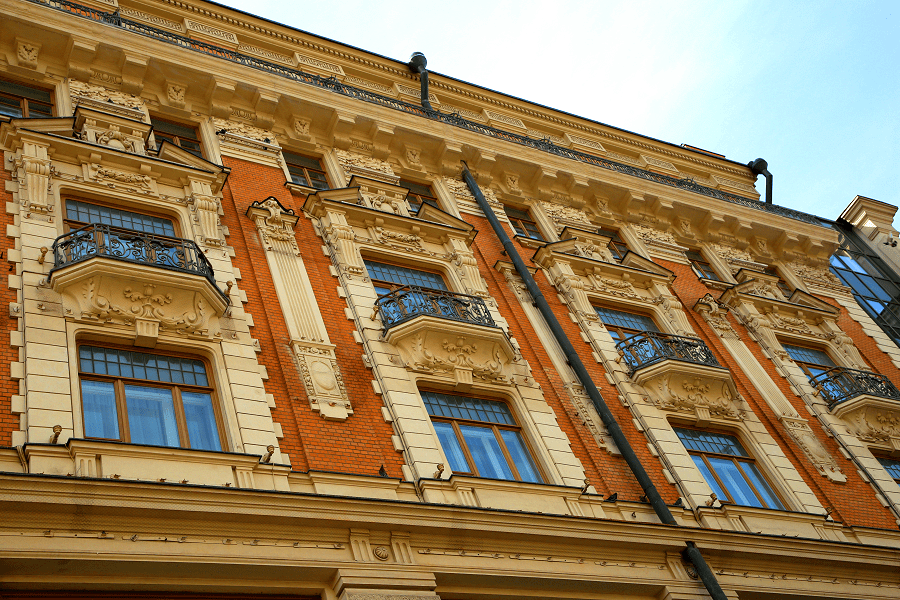The National Hotel is a Moscow hotel located on Mokhovaya Street, 15/1, at the intersection with Tverskaya street.
It was built between 1900 and 1902, according to the project of the architect Alexander Ivanov. It was considered one of the most prestigious in Moscow at its opening. After the Revolution of 1917, for several years, the building housed a hostel for officials of the Soviet government. In 1932 the hotel was revived under its former name.
The building was erected using advanced materials: reinforced concrete, facing bricks, and waterproofing materials. During the restoration of the hotel in 1994-1995, the solution was analyzed, with which the crowning cornice was fixed. The results showed that the builders carried out special technological measures that ensured high moisture resistance and, as a result, almost perfect preservation 90 years after construction.
The architect Ivanov used several technological innovations when creating interiors. In particular, on the main staircase, he made openwork marble steps without stringers, which creates the feeling that they are floating in the air. The steps are fixed on metal structures hidden in the wall.
The hotel has become a favorite place of residence for guests from St. Petersburg and foreigners. Writer Dmitry Merezhkovsky and poetess Zinaida Gippius, ballerina Anna Pavlova and composer Nikolai Rimsky-Korsakov stayed here. In 1913, the writer Anatole France lived in the hotel, and a year later, the science fiction writer HG Wells.
Several memorable episodes are associated with the National Hotel. In this building, on October 3, 1910, the first chairman of the State Duma, Sergei Muromtsev, died of heart failure. In the spring of 1906, while the Socialist-Revolutionaries were preparing an assassination attempt on the Moscow Governor-General Fyodor Dubasov, the terrorist Boris Vnorovsky lived in a hotel with a false passport. He chose a room with windows on Tverskaya Street to monitor the official leaving the residence.
From July 1, 1931, to December 31, 1932, the building underwent a large-scale reconstruction and restoration of the hotel’s interiors. For the renovated premises, furniture was used from the former aristocrats’ residences, particularly Anichkov and Tsarskoye Selo palaces.
After the restoration of the hotel, restaurants named after the cities of the Golden Ring appeared on the second floor.
From Moskovsky restaurant, the best view of the Kremlin and Red square opened.
The windows of the Suzdal restaurant overlooked Tverskaya and Okhotny Ryad.
The room where the Kostroma restaurant was later located was occupied by a children’s room in the 1930s, where you could leave children under the supervision of teachers.
During the reconstruction, the original majolica panel on the facade was replaced with a new one made by Ivan Rerberg. The theme of the image – the work of the Soviet worker – was made within the framework of the plan “Monumental Agitation and Propaganda” developed by Lenin.
Address: Moscow, st. Mokhovaya, 15/1-1.
Nearest metro: Teatralnaya, Ohotny Ryad, Ploschad Revolyutsii.
Attractions around: Bolshoi Theatre, Maly Theatre, Manezhnaya Square, Ploschad Revolyutsii (square), State Duma building, House of the Unions, Teatralnaya Ploschad, TSUM, Monument to Alexander Ostrovsky, Tretyakovskiy proezd, Central Children’s Store, Lubyanka Building, Metropol Hotel, Red Square, Tverskaya street, Kremlin.
See all hotels in Moscow.













